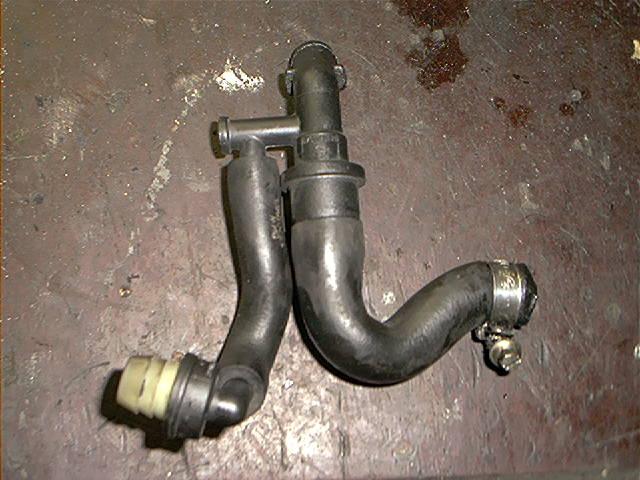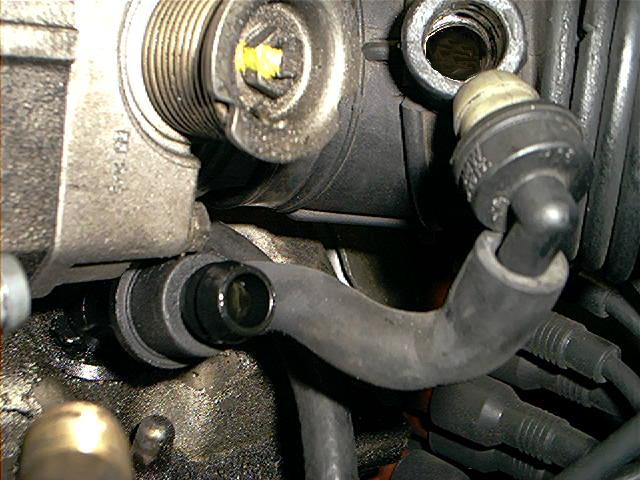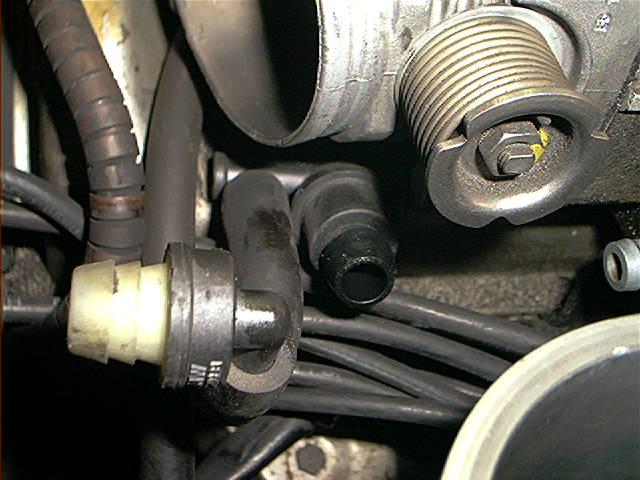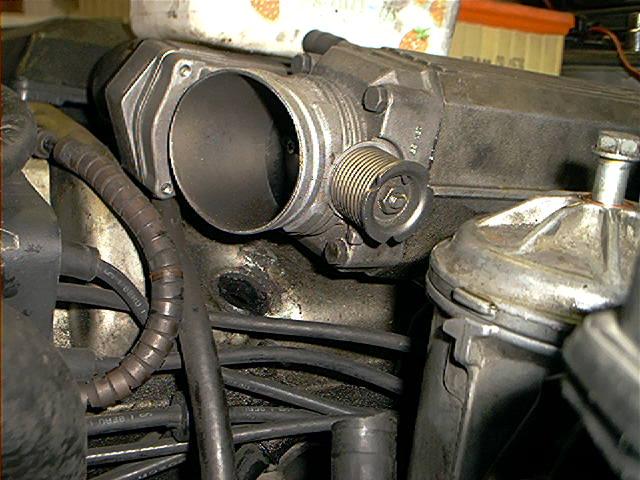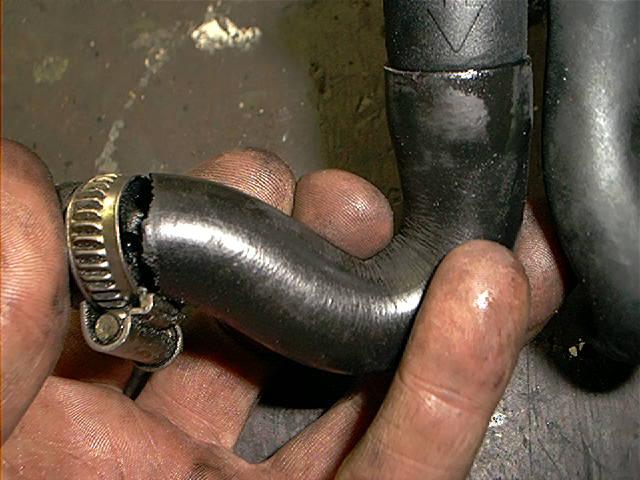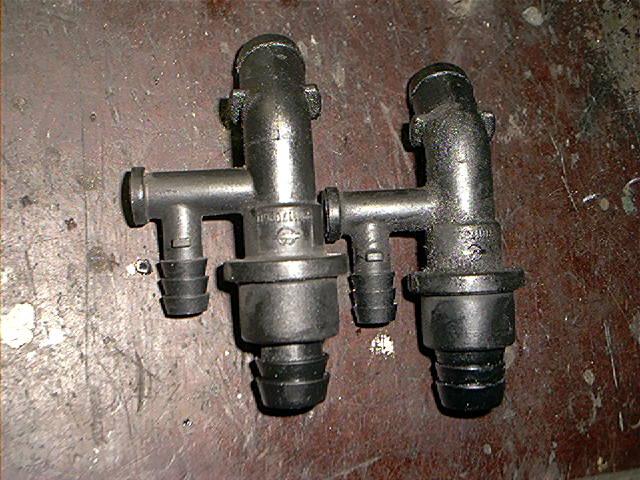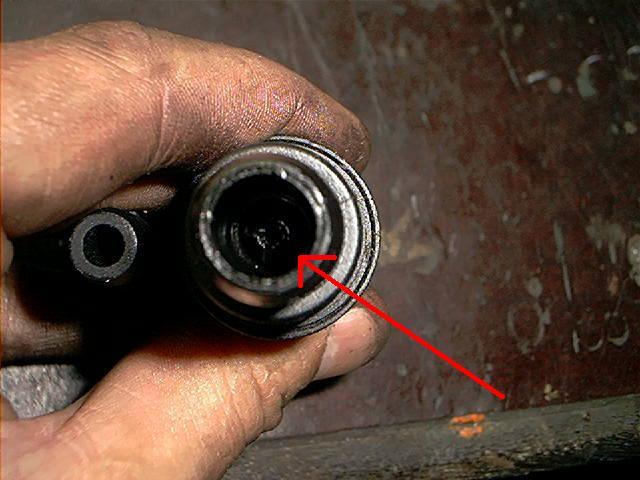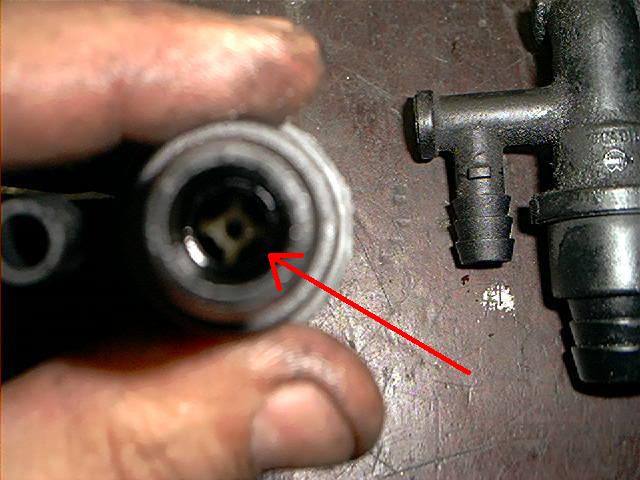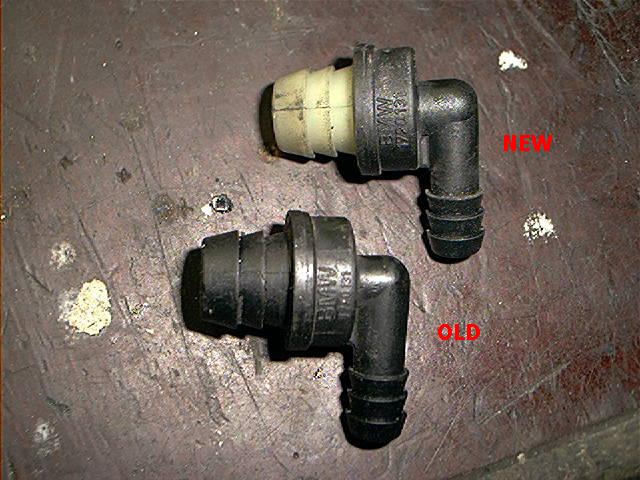Article by: Sean
Article applies to: all BMW models with the M70 V12 engine.
Problem: there are 2 known problems areas when you are suffering from an unusual high oil consumption. Problem one is worn valve stem seals, and problem two is faulty VCV valves.
Both issues are causing the same problem: after a few minutes (for instance, standing still for lights) idling an embarrassing blue smokescreen when you hard accelerate. This is visible from the rear view mirror.
Brett Anderson about this:
“I noticed on mine that after a period of de-accelerating (no smoke), putting your foot on the gas made smoke. When ‘coasting’, the fuel is entirely cut off to the injectors, the inlet vacuum is maximum which sucks the oil in.”
Guy Simpson about this:
“I was using about 1 quart every 400 miles. There were absolutely no indications there was a problem. I found a symptom by wanting to add oil while engine running and noticed a hissing noise emitted from the oil fill cap upon removal. Using my hand next determined this was pressure and not vacuum.”
This is an important check. Check the oil fill cap for vacuum, for instance by using a small thin plastic bag across the opening. Don’t let it get sucked into the engine, as your weekend will probably ruined. If you don’t have any crankcase vacuum but pressure instead, this could be related to faulty VCV valves. Patrick C about this: “You can do a quick test on the state of crankcase vacuum by removing the oil filler cap and stretch by two hands a plastic supermarket bag across the opening. The membrane should be seem pulled into the crankcase (but don’t let go the bag!) if there is vacuum inside.”
Background: the term ‘PCV’ valve is not appropriate. PCV is positive crankcase ventilation valve. The v12 has a negative crankcase pressure. So these are VCV valves (volume control valves). The high intake vacuum sucks the oil-contaminated fumes (mist) from the crankcase right into the manifolds so they get burned in the combustion process. When the vacuum is to high, or in other words: when there is a risk that engine oil could be sucked into the manifolds, clean filtered air enters the manifolds by using the bypass hose and the non return valve, attached to the intake boot. One remark must be made: even with a properly functioning VCV system and/or valve stem seals, the intake manifolds always tend to be a bit oily from the inside. This is due to the system of negative crankcase pressure and therefore absolutely normal.
From a schematic point of view:
Guy Simpson about this:
“A little theory on the PCV system as I think it works. The actual valve on the valve cover is a two-stage valve. If you blow through it in the proper direction, very tasty BTW, a low air flow will go through easily (1st stage), whereas a high flow air pulse (blow real hard) will cause the valve to shift to a low flow condition (2nd stage). The high vacuum of the intake should cause the valve to go to stage 2 as a normal condition and allowing a restricted flow from the crank to the intake. If it didn’t I could see a situation where the intakes would draw too much oil vapor and again high oil usage. There is an additional input to this valve coming from a check valve located in the boot between the MAF sensor and DK throttle motor. And in all normal circumstances this check valve is closed and not allowing any flow toward the PCV valve. It’s my bet that BMW built in a safety feature so if for some reason the PCV valve malfunctioned and remained in stage one, then the check valve would open and allow fresh air into the intake via the malfunctioning PCV valve. If this safety circuit were non existent you would be losing alot of oil going into the intake and your MAF reading would be off since now the crank is providing some amount of air instead of being drawn in by the normal pathways. With a bad valve your MAF reading is still good as the check valve is down wind.”
Another important comment: an official BMW service bulletin (TIS) was mentioning these common faulty VCV valves, indicating they could cause high oil consumption on 1 or 2 banks when not working properly. BMW changed the design from 1/1989.
You can recognize the changed valves, as I will explain later.
The v12 has 2 VCV assemblies each located underneath 1 DK motor.
Let’s start unbolting and removing parts:
First you have to locate the valves, because they are somewhat hidden. They are located underneath the DK motors:
On the contrary what some people or other websites may say, you can replace them when the DK’s are still attached.
This close-up picture shows the VCV assembly underneath the right throttle body (the hose between valve and intake manifold is already removed and the non-return valve detached from the intake boot):
This shows the left one. Again, the hose between the VCV valve and intake manifold removed for better understanding. I also removed the intake boot to gain access:
After removing the hose clamp of the hose of the intake manifold, you can pull the assembly easily out of the valve cover. Prevent falling dirt into the valve cover.
Some reported that they replaced also the rubber grommet of the valve cover. Because I am both cheapskate and lazy, I didn’t:
After closely examining the complete assembly (2 hoses, 2-stage valve and non-return valve) I discovered a cracked hose near the hose clamp.
So I could make another trip to the BMW dealer for a couple of new hoses. Moral of this story: replace the complete assembly:
These are the actual 2-stage VCV valves:
How to recognize a new modified type and an old type of VCV valve? Look into the valve from the back. If you see a white plunger, it’s the new type.
If you see a black plunger, it’s the old type.
Old type:
New type (sorry for the not-so-sharp picture):
Not only is the 2-stage valve updated, but also the non-return valve, again the black-white identification:
Reinstalling is the same as removing. Because it is pretty straightforward, I won’t go into details.
Remark from Sean after receiving some emails about this: if you have the modified type of valves, you don’t always have to replace them when you are suffering from lack of vacuum or high oil usage.
Just cleaning them seems curing the problem already.
Derek Mcilreavy about this: “On Sunday I did a very simple job that has helped my car a great deal, cleaned out the pcv valves, very simple (..) would not have expected such a good result but there you go?”
But not always.
TsevenFifty (taken from the roadfly forum) about this: “After replacing intake gaskets and valve cover gaskets, I also had a problem with crankcase pressure — an audible hiss when the oil filler cap was removed. I suspected vacuum leaks so I replaced dk motor vacuum hoses, and cleaned the crankcase ventilation hoses, check valves and “pcv” valves with solvent. This helped some, but when I replaced the “pcv” valves (aka Volume Control Valves)the problem was solved completely. I thought that since I could clean them out and blow through them, they were ok. Not so. Now with new valves there is a slight negative pressure at the oil filler cap and no leaks — none.”
TsevenFifty is pointing out another important point of view. Also other people reported that several oil leaks stopped after replacing these particular valves. The seals just don’t like positive crankcase pressure.
Total amount of parts and cost (for convince: 1 Euro equals 1 US dollar) : this is Europe. Some prices or part numbers may differ depending on country, model or production year. Check out your dealer for the right part numbers for your car. Prices are in Euro without BTW/VAT/taxes.
| BMW Part Number | Description | Price | QTY |
| 11151720392 | Vacuum hose left | $11.79 | 1 |
| 11151720393 | Vacuum hose right | $11.09 | 1 |
| 11151720131 | Non return valve | $11.09 | 2 |
| 11151718642 | 2 stage valve left | $28.39 | 1 |
| 11151718713 | 2 stage valve right | $28.39 | 1 |
Total amount of time: ~1.5 hour
Skills needed/difficulty level: Nah.
Satisfaction level after the job done: you didn’t think that my problems of the high oil consumption where solved after the replacement, do you? Of course not.
I am suffering from both problems. Faulty VCV valves AND worn valve stem seals. But I had a slight hope it would burn some less oil and . . . never mind.

